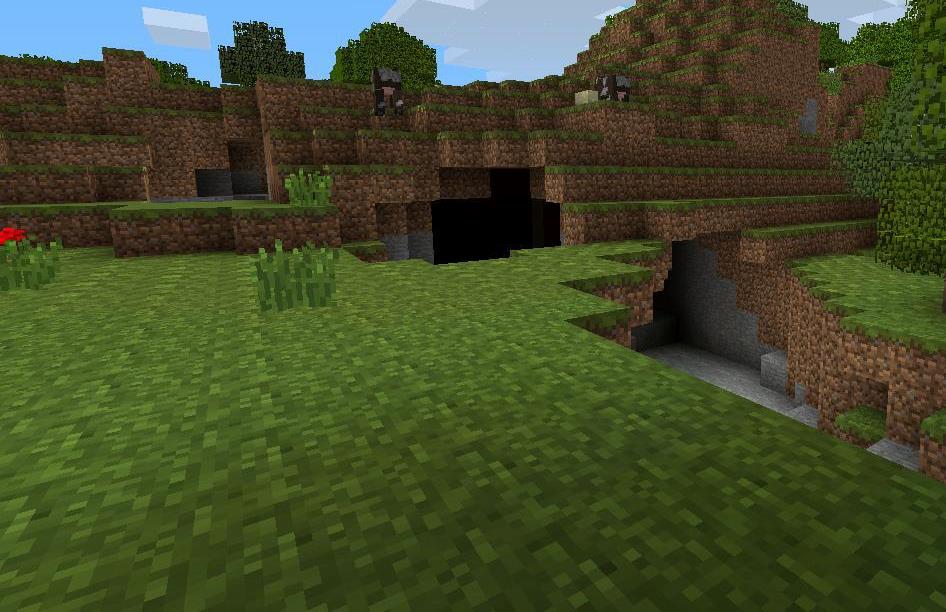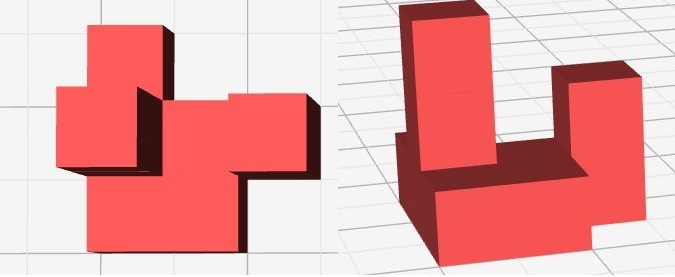House Building
Time Limit: 2000/1000 MS (Java/Others) Memory Limit: 262144/262144 K (Java/Others)
Total Submission(s): 248 Accepted Submission(s): 178
Problem Description
Have you ever played the video game Minecraft? This game has been one of the world's most popular game in recent years. The world of Minecraft is made up of lots of 1×1×1
blocks in a 3D map. Blocks are the basic units of structure in Minecraft, there are many types of blocks. A block can either be a clay, dirt, water, wood, air, ... or even a building material such as brick or concrete in this game.

Figure 1: A typical world in Minecraft.
Nyanko-san is one of the diehard fans of the game, what he loves most is to build monumental houses in the world of the game. One day, he found a flat ground in some place. Yes, a super flat ground without any roughness, it's really a lovely place to build houses on it. Nyanko-san decided to build on a n×m big flat ground, so he drew a blueprint of his house, and found some building materials to build.
While everything seems goes smoothly, something wrong happened. Nyanko-san found out he had forgotten to prepare glass elements, which is a important element to decorate his house. Now Nyanko-san gives you his blueprint of house and asking for your help. Your job is quite easy, collecting a sufficient number of the glass unit for building his house. But first, you have to calculate how many units of glass should be collected.
There are n rows and m columns on the ground, an intersection of a row and a column is a 1×1 square,and a square is a valid place for players to put blocks on. And to simplify this problem, Nynako-san's blueprint can be represented as an integer array ci,j(1≤i≤n,1≤j≤m) . Which ci,j indicates the height of his house on the square of i -th row and j -th column. The number of glass unit that you need to collect is equal to the surface area of Nyanko-san's house(exclude the face adjacent to the ground).

Nyanko-san is one of the diehard fans of the game, what he loves most is to build monumental houses in the world of the game. One day, he found a flat ground in some place. Yes, a super flat ground without any roughness, it's really a lovely place to build houses on it. Nyanko-san decided to build on a n×m big flat ground, so he drew a blueprint of his house, and found some building materials to build.
While everything seems goes smoothly, something wrong happened. Nyanko-san found out he had forgotten to prepare glass elements, which is a important element to decorate his house. Now Nyanko-san gives you his blueprint of house and asking for your help. Your job is quite easy, collecting a sufficient number of the glass unit for building his house. But first, you have to calculate how many units of glass should be collected.
There are n rows and m columns on the ground, an intersection of a row and a column is a 1×1 square,and a square is a valid place for players to put blocks on. And to simplify this problem, Nynako-san's blueprint can be represented as an integer array ci,j(1≤i≤n,1≤j≤m) . Which ci,j indicates the height of his house on the square of i -th row and j -th column. The number of glass unit that you need to collect is equal to the surface area of Nyanko-san's house(exclude the face adjacent to the ground).
Input
The first line contains an integer T
indicating the total number of test cases.
First line of each test case is a line with two integers n,m .
The n lines that follow describe the array of Nyanko-san's blueprint, the i -th of these lines has m integers ci,1,ci,2,...,ci,m , separated by a single space.
1≤T≤50
1≤n,m≤50
0≤ci,j≤1000
First line of each test case is a line with two integers n,m .
The n lines that follow describe the array of Nyanko-san's blueprint, the i -th of these lines has m integers ci,1,ci,2,...,ci,m , separated by a single space.
1≤T≤50
1≤n,m≤50
0≤ci,j≤1000
Output
For each test case, please output the number of glass units you need to collect to meet Nyanko-san's requirement in one line.
Sample Input
2
3 3
1 0 0
3 1 2
1 1 0
3 3
1 0 1
0 0 0
1 0 1
Sample Output
30
20
Figure 2: A top view and side view image for sample test case 1.

Source
题意 求表面积
学长讲完以后 自己就敲过 一直超时 刚开始 想复杂了 要处理好几个东西 TLE 请叫我TLE 小彩笔
想着 处理俯视 标记 还要记录每行每列的最高柱 还要判断 被挡住的 GG
然后看了网上的题解 自己真是傻Ⅹ
顶部表面积必须标记处理
侧边的 其实 只要考虑 该柱是否被挡住 有多高贡献了表面积
判断相邻的四个柱与中间的高度关系 !!
#include<bits/stdc++.h>
using namespace std;
int t;
int dis[4][2]={{1,0},{-1,0},{0,1},{0,-1}};
int n,m;
int exm[55][55];
int fu;
int re;
int main()
{
while(scanf("%d",&t)!=EOF)
{
for(int i=1; i<=t; i++)
{
memset(exm,0,sizeof(exm));
fu=0;
re=0;
scanf("%d%d",&n,&m);
for(int j=1; j<=n; j++)
for(int k=1; k<=m; k++)
{
scanf("%d",&exm[j][k]);
if(exm[j][k]>=1)
fu++;
}
re+=fu;
for(int j=1;j<=n;j++)
for(int k=1;k<=m;k++)
{
for(int l=0;l<4;l++)
{
int xx=j+dis[l][0];
int yy=k+dis[l][1];
if(exm[j][k]>exm[xx][yy])
re=re+(exm[j][k]-exm[xx][yy]);
}
}
printf("%d\n",re);
}
}
return 0;
}


